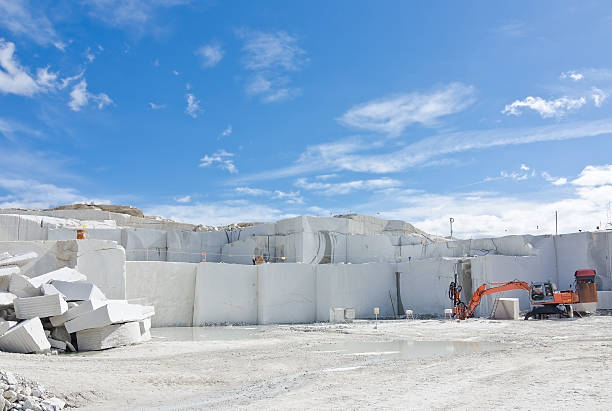Introducing the Mysteries of Granite Quarrying: Where Strength and Sophistication Meet
The globe of granite quarrying is a realm where the raw stamina of nature assembles with human virtuosity to create structures that stand the examination of time with an air of style. From the midsts of quarries to the precise polishing in workshops, the procedure of changing granite right into architectural marvels is a complicated dancing of practice and innovation. As we peer into the depths of this old craft, we start to reveal the hidden complexities that shape the extremely significance of our constructed setting.
The Beginnings of Granite Quarrying
In the annals of architectural history, the beginnings of granite quarrying are shrouded in a tapestry of old workmanship and geological wonders. Dating back to ancient Egypt and Mesopotamia, the extraction of granite from quarries marked the beginning of a journey that would ultimately cause the production of several of the globe's most legendary frameworks.
Granite quarrying's origins can be mapped to the knowledgeable artisans who recognized the stone's resilience and aesthetic appeal. Through a combination of primitive tools and sheer decision, these early quarry workers unearthed granite blocks that would come to be the foundation of human beings.
As human beings progressed, so did the strategies of quarrying granite. The Romans, renowned for their design prowess, developed advanced approaches for removing granite to build monuments, holy places, and roadways that stood the examination of time.
The tradition of these ancient quarrying techniques proceeds to shape modern style, with granite continuing to be a sign of strength and style in building and construction jobs around the globe. (granite quarries in south africa)
Devices of the Quarrying Trade
The evolution of granite quarrying strategies from old worlds to modern-day times highlights the important function played by the tools of the quarrying profession in shaping the industry's techniques. In ancient times, quarrying tools were primary, often containing blades, hammers, and wedges made from materials like bronze or iron. These devices needed significant workforce and time to extract granite obstructs from quarries.

In addition, the intro of pneumatically-driven devices and high-powered equipment has actually substantially minimized the physical labor called for in quarrying procedures, improving employee security and efficiency. As the quarrying market continues to innovate, the tools of the trade continue to be at the center of driving progression and forming the future of granite removal.
Removing Blocks of Granite
Making use of accuracy equipment and advanced methods, the extraction of granite blocks from quarries has actually come to be an innovative procedure in the contemporary quarrying market. The preliminary step involves identifying the location and dimension of the granite down payment to establish one of the most reliable removal technique. Once a suitable website is picked, the extraction process begins with the drilling of holes for the positioning of dynamites. Managed blasting techniques are then employed to disintegrate the granite right into convenient areas.

Polishing and Ending Up Methods
To accomplish a remarkable surface on granite blocks, knowledgeable artisans utilize a collection of precise sprucing up and finishing methods. After the first extraction and shaping procedures, the granite blocks undergo a detailed polishing phase to boost their all-natural charm and toughness.
In addition to polishing, finishing techniques are applied to further refine the additional hints granite's look. By meticulously picking and using these brightening and completing methods, artisans can transform raw granite obstructs right into elegant items that display both stamina and beauty.

Ecological Impact and Sustainability
With the expanding emphasis on ecological consciousness in the sector, granite quarrying practices are significantly scrutinized for their effect on natural sources and long-term sustainability. Quarrying for granite can have considerable ecological implications. The removal procedure typically entails making use of hefty machinery, dynamites, and huge amounts of water, bring about habitat damage, dirt erosion, and water contamination. In addition, the transportation of granite from quarries to processing facilities creates carbon exhausts, even more adding to ecological degradation. granite quarries in south africa.
To minimize these impacts and ensure sustainability in granite quarrying, industry stakeholders are embracing different procedures. Carrying out innovative modern technologies to lower power intake click here for info and water usage, reclaiming quarried land for ecological restoration, and promoting responsible sourcing methods are some techniques being employed. Additionally, more tips here accreditations such as the Forest Stewardship Council (FSC) and the Leadership in Power and Environmental Layout (LEED) aid customers recognize eco-friendly granite products.
Final Thought
To conclude, granite quarrying is a procedure that needs specialized tools and strategies to essence blocks of granite and polish them to a high degree of finish. While the ecological effect of quarrying can be significant, initiatives are being made to improve sustainability techniques in the industry. On the whole, granite quarrying is a delicate equilibrium between using the stamina and elegance of this natural rock while reducing its influence on the atmosphere.